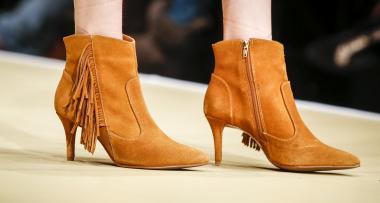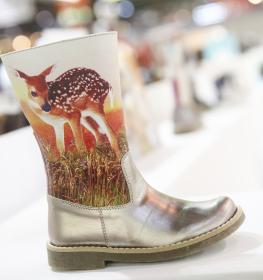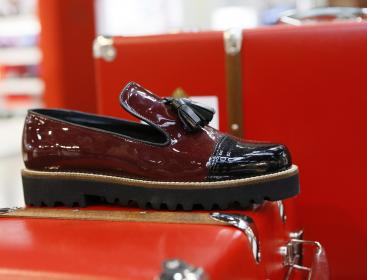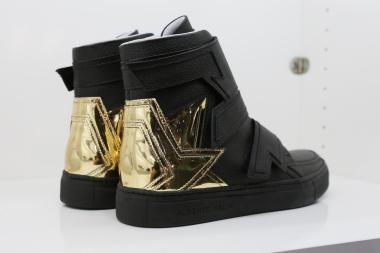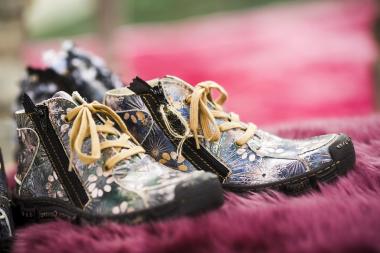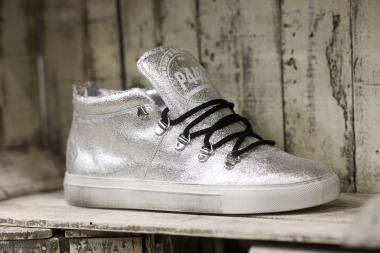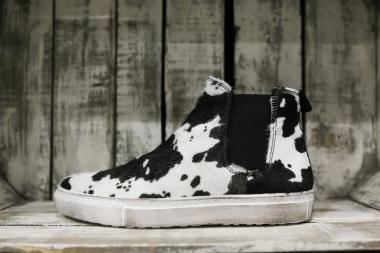SHOES MUST GLITTER IN WINTER 2016/17
Paint, glitter and metallic effects should provide the highlights at the foot in the coming autumn / winter 2016/2017. In addition, deep shades of red and the trend color cognac and camel. Otherwise it is said: more volume, more profile. Androgenic shoe types conquer the shoe racks.
While the chilly autumn weather in September and in the first half of October still brought good sales for winter shoes and boots, the mild November and December thwart the retailers bill. Especially snow shoes and boots became shop keepers at many places, especially small and medium size enterprises had to record a decline in sales. Although the online trade had to fight with the same weather conditions, initial figures however indicate, that the online shoe trade was able to register last year a sales growth of around seven percent. The stationary trade is looking for new concepts, is even more intensely dealing with its assortments and suppliers and aims to react therefore with a proper weighting of new footwear trends. Many traders took advantage of the just ended GDS shoe fair in Dusseldorf in order to learn about the new trends for autumn / winter 2016/17: The hippie look with its inspirations from the 1970s finds its continuation. Folkloric elements are implemented with much attention to details: fringe, fur, embroidery and patchwork will be found not only on shoes but on boots as well. Velvets, animal prints, tapestry, floral or abstract patterns enhance the detail-note of the theme. Snake prints are found not only subtly used as an ornament, but all over the entire shoe. Pumps and ballerinas are interpreted feminine with curved heels. Hip, although probably not a bringer of numbers, the overknee, to be carried with the tunic dress.
Trendy remain androgynous types of footwear such as Budapest, Broques, Monks and Loafer, that are perfectly suited to types of trousers as the culotte and the new over long pants. Their soles are partly very distinctive but extremely light. Loving details such as perforations, tassels, straps ensure modernity. The new bootees convince thru reduced optics and different shaft heights: They range from almost ankledeep over classic variants to medium-high boots which are worn narrow to the leg. Copped and round boot strips stay, new are square forms. At heels block-heels and slightly tapered shapes are in vogue, the soles are ultra-light and come in their fashionable variants as plateau or wedge soles.
The sneaker is an indispensable part of the shoe closets and remains unbeatable in the coming autumn / winter. In the new season it will appear cleaner and with fewer details. Tone in tone leo, metallics and suede will be mixed with a little paint, which gives the new sneakers an extravagant touch. Matt-gloss and 3D effects give the sneakers a high fashion look. For the colder months the sneaker comes in a material mix with fur and a warm interior design. Neoprene, mesh and leather produce in combination with 3D printing a new trendy image. Side zipper, damping and padding ensure greater comfort. For the soles lightweight, flexible PU or mix variants remain important. Fashionably are darker soles or soles in a dirty look in addition to the white and light soils.
In the new season the classic black and will not disappear from the shoe cabinets, even though black will not be traded as the ultimate trend color in the new season. Buying impulses should be given by stone, timber and mineral tones as well as cognac and camel, rust and deep shades of red and khaki, olive and denim tones. Color gradients and strong contrasts create a new appearance. Gloss and glitter are back in the trend, through glittering colors as well as through pearls and strass.
The choice of materials by the designers for the new shoe fashion is versatile as seldom before, they like to mix in the new season: animated, soft qualities with haptic and structure, next to very clean, smooth qualities. It will be patched, stitched, printed, embossed, patterned and flocked. The trendy shoe materials include leather qualities in natural optics, often with noticeable grain pattern. Lizard embossments are back in vogue, especially crocodile and python. Soft suede and nubuck qualities are a must. Exceptional finish effects and fantasy embossments are very trendy. 3D is not just an issue for new high-tech qualities,
but can also be seen as brocade, bouclé, lace or jacquard pattern.


